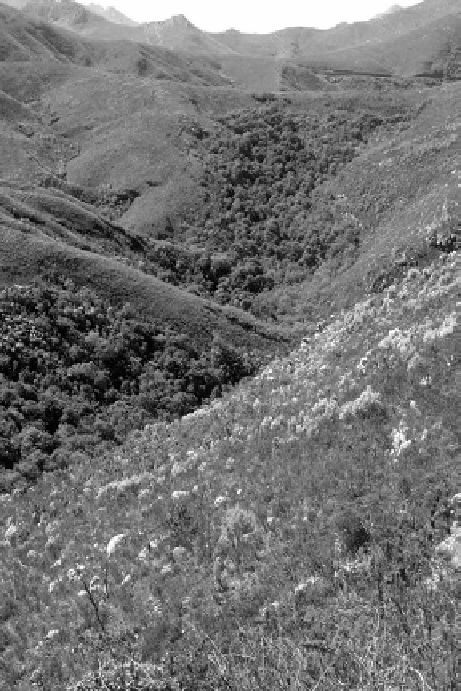Agriculture Reference
In-Depth Information
Fig. 7.2
Fynbos-dominated landscape (foreground and distant slopes) with forests restricted
to ravines, Saasveld, Western Cape, South Africa. (Photo by Jon Keeley.)
Alternatively, since climate has limited explanatory power it is apparent that
fire or some other factor is necessary to account for Cape landscape patterns.
Figure 7.4
illustrates how the major vegetation types of the region are distributed
in relation to fire, rainfall and soils while
Table 7.1
shows characteristic taxa of
each type. Cape fynbos is the most prominent fire-prone formation occurring over
a wide rainfall gradient with rather little structural change across the gradient. It is
usually associated with nutrient-poor sandy soils. In mountain fynbos these are
derived from very pure quartzites. Lowland fynbos has more varied geology but is
typically restricted to nutrient-poor sandy, or limestone-derived soils. It is
replaced by a second major fire-prone shrubland, renosterveld, on clay-rich soils.
Renosterveld is dominated by shrubby members of the Asteraceae, particularly
Elytropappus rhinocerotis
, which can dominate in monotypic stands (Taylor
1978
;
Boucher and Moll
1981
). Renosterveld often occurs on granite and shale-derived
soils in valleys and as an apron on the lower slopes of mountain fynbos. As rainfall

